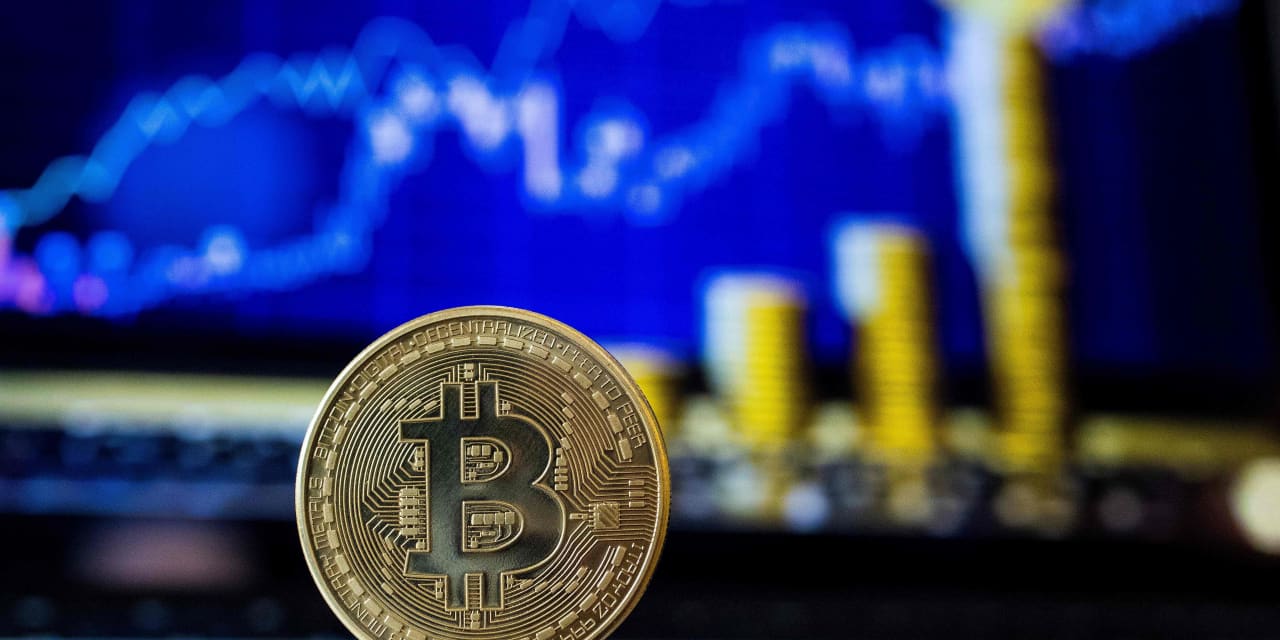Bitcoin has fallen almost 20% in the past two weeks, when a new breed of U.S. exchange-traded funds debuted that invest in the cryptocurrency. Some analysts still see room for the digital asset to reach an all-time high by the end of this year.
Bitcoin
BTCUSD,
+0.43%
traded at around $39,670 on Wednesday, down over 19% from a cyclical high of $49,042 on Jan. 11, according to CoinDesk data, the first day of trade for a new strain of ETFs that emerged after clearing a protracted U.S. regulatory process. The crypto is still over 40% lower from its all-time high of roughly $68,990 reached in 2021.
“For stocks, a 20% pullback typically indicates that a bull market is over,” said Peter Eberle, chief investment officer at crypto investment firm Castle Funds. “But in bitcoin, it’s not unusual to have a 30% pullback in a bull market,” he said in a phone interview.
The pullback was in part driven by profit taking, Eberle said. Bitcoin went up over 150% in 2023, with a 13% gain in December, as optimism around the ETFs approval built up.
The selling pressure also partly comes from traders unwinding their positions in the Grayscale Bitcoin Trust
GBTC,
which in January converted from a close-ended trust to an ETF, according to Eberle.
GBTC was launched in 2013 as a private, open-ended trust for accredited investors and began trading publicly in 2015. While the trust initially traded at a premium to its net asset value, or the value of the bitcoin it holds, it flipped to a discount in 2021. The fund traded at a discount of as much as 49% to its net asset value in December 2022, according to data from YCharts.
The discount didn’t disappear until the SEC finally approved Grayscale’s application to convert the fund into an ETF. Compared with close-ended funds, ETFs have a unique structure that allows certain financial institutions, known as authorized participants, to create and redeem shares, to keep the funds’ value aligned with that of the assets they hold.
Grayscale investors were selling their shares because of “their double profits: one being the negative 40% conversion rate to become zero, and the other being the significant price increase of bitcoin over the last year,” Youwei Yang, chief economist at Bit Mining, said in emailed comments.
The estate of bankrupt crypto exchange FTX, alone, had reportedly sold roughly 22 million GBTC shares, which were worth close to $1 billion, since the fund converted to an ETF, according to a report by CoinDesk on Monday.
The recent dollar strength has also weighed on bitcoin price, according to Joel Kruger, market strategist at LMAX Group. The ICE U.S. Dollar Index
DXY,
which tracks the currency against a basket of six major rivals, rose 2.3% over the past month, according to Dow Jones Market Data.
Read: Bitcoin ETFs fueled hopes for other crypto ETFs — but don’t get too excited
What’s next
From the technical perspective, bitcoin’s slide below $40,000 “has opened the door for the possibility of a deeper correction, which could take us as far as back down towards previous resistance in the $32k area,” said Kruger at LMAX Group.
“However, if we do see setbacks extend this far, we believe this should be the extent of the pullback before the market once again looks to find its legs, and turn back up, for the next major upside extension and bullish continuation beyond $50k and towards a retest of the record high,” Kruger said.
Castle Funds’s Eberle is also positive that bitcoin could reach a new all-time high by the year-end. Bitcoin ETFs will gradually attract more capital inflows, while the so-called halving event is expected to happen in April, Eberle noted.
Bitcoin halving refers to a process where block rewards given to crypto miners are cut in half after every 210,000 blocks are mined, or about every four years. Historically, bitcoin has seen price appreciation take hold months after halvings.
However, Bit Mining’s Yang is less optimistic, as macroeconomic risks persist.
“All of these players are aware of the global macro conditions, even though stocks are at their all-time highs but the risks are not negligible, so why not take profits at this ‘good enough’ price and profit?” Yang said.
“The more people see this narrative, the more sell offs, and people who wanted to buy will also likely wait,” he said. The risk is a downward spiral continues until “some really positive things happen,” he said, such as the Federal Reserve cutting rates, potentially in the third quarter, which could provide liquidity to the market.

